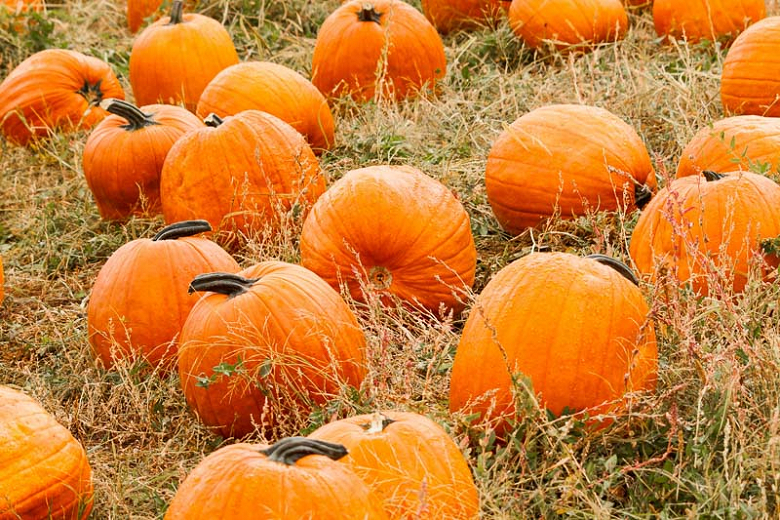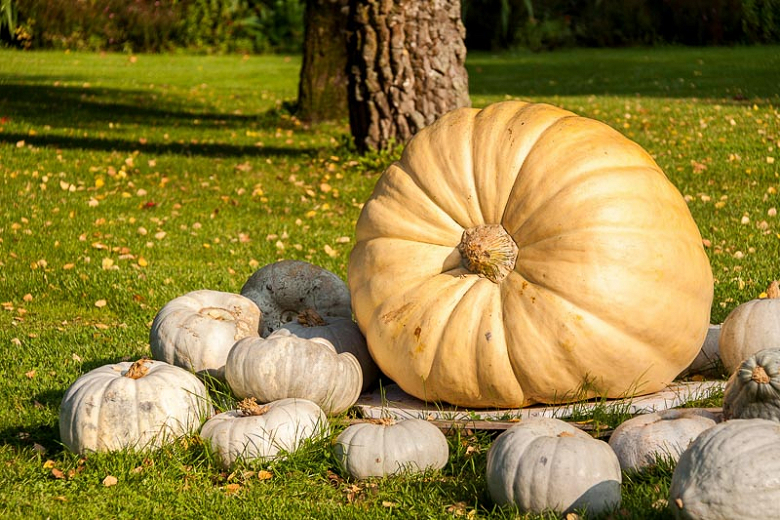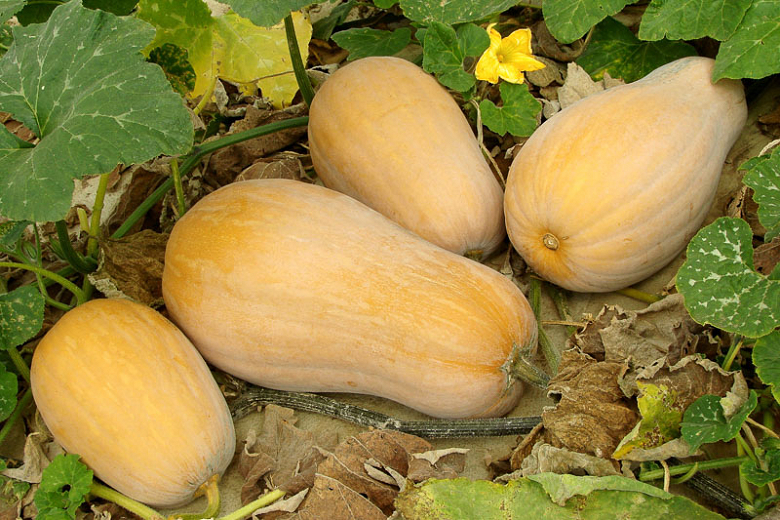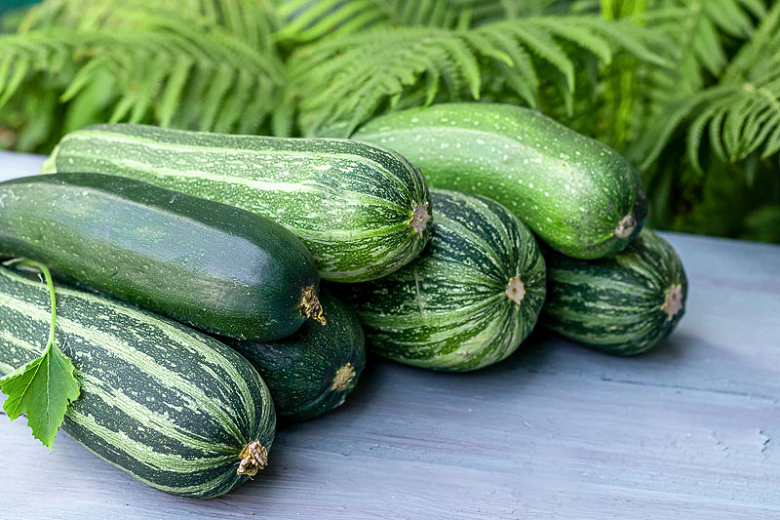Cucurbita pepo – Pumpkin
A beloved symbol of autumn, Pumpkins (Cucurbita pepo) are plump annuals grown for their fleshy, nutritious fruits. Carved into jack-o’-lanterns for Halloween and cooked into pies for Thanksgiving dessert in the United States and Canada, Pumpkins are easy and fun to grow.
A beloved symbol of autumn, Pumpkins (Cucurbita pepo) are plump annuals grown for their fleshy, nutritious fruits. Carved into jack-o'-lanterns for Halloween and cooked into pies for Thanksgiving dessert in the United States and Canada, Pumpkins are easy and fun to grow.
What is Pumpkin?
- Pumpkin is a winter squash in the Cucurbitaceae plant family, alongside melons, spaghetti squash, and cucumbers.
- The most popular varieties of squash belong to one of three species: Cucurbita pepo, C. moschata, and C. maxima.
- Although often considered a vegetable, Pumpkin is botanically classified as a fruit, as it grows from a flowering plant and contains seeds.
- Scientists believe that Pumpkins originated in North America about 9000 years ago. Today, they are grown around the world on every continent except Antarctica.
- Pumpkins are usually round and orange, although the size, shape, and color can vary depending on the variety. Over 45 varieties of pumpkins exist, ranging in color from orange, red, and yellow to green.
- They have a thick outer rind that is smooth and ribbed, as well as a stem that connects the Pumpkin to its leafy plant.
- The thick, dense flesh is light orange when ripe and surrounds a large cavity containing stringy pulp and many large, flat, ivory-colored seeds.
- Leaves, flowers, pulp, and seeds are edible.
- Although all Pumpkins are technically edible, some are better for decoration and carving, while others are best for cooking.
- Pumpkins are warm-season crops and can easily be injured by frost.
- Pumpkin plants generally produce extensive vines, so ample space is needed.
- The practice of carving Jack-O'-Lanterns was brought to America by Irish immigrants.
Health Benefits of Pumpkins
- While Pumpkins are a flavorful addition to savory dishes, they also provide health benefits.
- Pumpkins are low in calories (92% water) but are rich in vitamins, minerals, and antioxidants.
- Beta carotene is a powerful antioxidant that gives orange fruits and vegetables their color. It is partially converted into vitamin A by the body.
- Vitamin A: one cup of Pumpkin provides 289% of your daily needs. This vitamin is essential for your eyes, immune system, heart, and kidneys.
- Vitamin C: one cup provides 19% of your daily needs. Vitamin C strengthens the immune system.
- Potassium: one cup provides 16% of your daily needs. Potassium helps regulate fluid balance, nerve signals, and muscle contractions.
- Iron: one cup provides 7.8% of your daily needs. Iron is essential for growth and development and improves both mental and physical performance.
- Fiber: one cup provides 11% of your daily needs. Fiber slows the sugar absorption into the blood, smooths digestion, promotes regular bowel movements, and can help reduce the risk of colon cancer too.
- The fiber, potassium, and vitamin C in Pumpkins support heart health and may also reduce the risk of cardiovascular diseases.
- Beta carotene, vitamins C and E in Pumpkins, are also important for your skin health.
- Nutrition Facts (one cup): 49 calories, 12 grams of carbs, 1.76 grams of protein, 0.17 grams of fat, and 2.7 grams of fiber.
Cooking with Pumpkins
- When cooked, Pumpkin is tender and offers a mild, earthy sweet taste with nutty flavors.
- Pumpkin is best suited for baking, boiling, steaming, and roasting.
- Its versatile flavor makes it part of spicy, sweet, or savory dishes.
- Pumpkin is popular in pies, custards, and muffins.
- It can be used to prepare thick, creamy soups or seasoned with salt and pepper and roasted in the oven.
- The seeds are also edible and can be eaten as a snack when toasted.
- The flowers have a soft, delicate texture and can be stuffed with soft cheeses and herbs, then battered and fried.
- Uncut Pumpkin can be stored for 2-3 months in a cool and dry place. Once cut, it should be used within one week.
Growing Pumpkins
- Pumpkins grow up to 12-30 in tall (30-75 cm) and 20-30 ft long (6-9 m), depending on the variety.
- They perform best in rich, fertile, acidic to neutral (pH ranging from 6 and 6.8), moist, well-drained soils in full sun (at least 6-8 hours of direct sunlight per day) in a sheltered location.
- If your soil lacks nutrients, add well-rotted organic matter or compost before planting.
- Keep the soil evenly moist but not soggy. Regulate irrigation properly to avoid excessive moisture or water stress.
- Do not splash the leaves when you water the plant. Prevent disease problems by keeping them dry.
- Depending on the variety, Pumpkins take 90-120 days to harvest after planting.
- Pumpkins are usually direct-seeded when all danger of frost has passed, and the soil temperature is at least 65-95°F (18-35°C).
- Planting in rows: Sow seeds 6-12 inches apart (15-30 cm) in rows 6-10 feet apart (180-300 cm). Thin plants so that they are 18-36 inches apart (45-90 cm) once they are 2-3 inches tall (5-7 cm).
- Planting in hills (raised mound of soil): Sow 4 or 5 seeds 1 inch deep ( 2.5 cm) cm) in hills that are 4-8 feet apart (120-240 cm). Thin plants so that there are 2-3 plants per hill once they are 2-3 inches tall (5-7 cm).
- Planting in hills benefits: Hills enable the soil to warm faster early in the season, provide better drainage, and allow for increased pollination (since several seeds are planted together).
- Water thoroughly after planting.
- Cover plants with a floating row cover in order to protect them from insects and late cold snaps.
- Remove the row cover when the plants begin to flower so insects can pollinate the flowers, or you will not get any fruit.
- Mulch to retain moisture, keep the soil warm, and control weeds.
- Fertilize every 10–14 days with a high potassium liquid fertilizer, such as tomato feed, once the first fruits start to swell.
- To grow bigger Pumpkins, pinch the vines back once the fruits appear so the energy goes into the fruit.
- Rotate crops: Prevent problems by not planting any member of the cucurbit family (cucumbers, melons, and squash) in the same place more often than every four years.
- Pumpkins are susceptible to a few pests. Keep an eye out for aphids, cucumber beetles, squash bugs, squash vine borers, slugs, and snails.
- Pumpkins are susceptible to diseases, including anthracnose, cucumber mosaic virus, downy mildew, gray mold, and powdery mildew.
Plant Hand Pollination
- Pumpkin plants produce male and female flowers. However, only pollinated female flowers produce fruit.
- Bees are the primary pollinators of pumpkin plants, although other flying insects can be pollinators.
- In case of poor pollination, because of weather conditions or a lack of pollinators, you can try to hand-pollinate your plants yourself.
- Remove a male flower (no swelling at its base) and brush the central parts against the center of a female flower (female flowers have a tiny fruit at the base).
- If the female flower is pollinated, the flower shrivels and closes, and a tiny Pumpkin fruit grows into a full-size fruit.
- If there is no pollination, the tiny fruit shrivels and drops from the plant.
Harvesting and Storing
- Pumpkin requires a long growing season to allow the fruit to produce and ripen.
- Do not harvest the pumpkins until after the vines have died but make sure you harvest them before freezing temperatures hit.
- The skin of a ripening pumpkin should be hard, with a uniform color, and should not dent when pressed with a fingernail.
- Carefully cut fruits off the plant with pruners or a knife.
- The flowers can also be harvested and have a slightly sweet flavor. They can be stuffed and fried or eaten raw in salads.
- To help them store longer, harvest with a few inches of stem still attached.
- Handle your Pumpkins very gently, or they may bruise. Never carry them by their stem.
- Pumpkins can be left in the field in a sunny spot for about 10 days – to allow the rind to harden.
- After curing, they can be stored in a dry and reasonably cool area, 50-55°F (10-13°C) for 2-3 months. High humidity and extreme temperatures will damage Pumpkins quickly.
Best Companion Plants
Requirements
| Hardiness | 2 – 11 |
|---|---|
| Climate Zones | 1, 1A, 1B, 2, 2A, 2B, 3, 3A, 3B, 4, 5, 6, 7, 8, 9, 10, 11, 12, 13, 14, 15, 16, 17, 18, 19, 20, 21, 22, 23, 24, A1, A2, A3, H1, H2 |
| Plant Type | Annuals |
| Plant Family | Cucurbita – Squash |
| Exposure | Full Sun |
| Season of Interest | Summer (Mid,Late)Fall |
| Height | 1' – 3' (30cm – 90cm) |
| Spread | 2' – 30' (60cm – 9m) |
| Water Needs | Average |
| Maintenance | High |
| Soil Type | Loam, Sand |
| Soil pH | Acid, Neutral |
| Soil Drainage | Moist but Well-Drained, Well-Drained |
| Tolerance | Rabbit |
| Attracts | Bees |
| Garden Uses | Beds and Borders, Patio and Containers |



